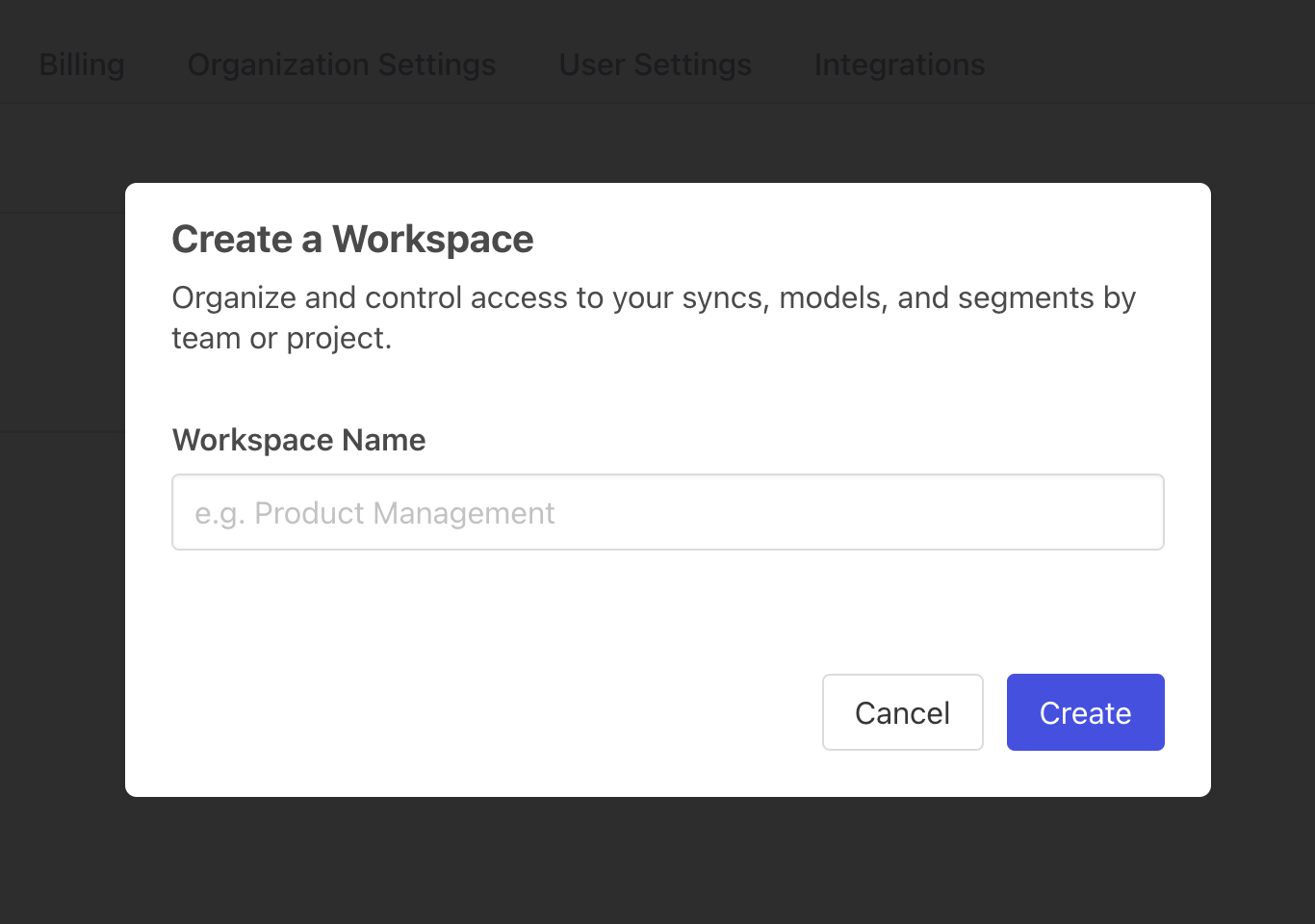Earlier this year, we released role-based access controls that enable customers to secure access to sensitive data while empowering more experimentation for business users.
In that same vein, we’re excited to release Workspaces, the next level of governance for your Census account.
Workspaces enable you to manage permissions granularly for different teams, projects, or use cases. You can organize syncs and models in Workspaces however you wish.
For example, you can give your Sales team and your Marketing team their own little slices of Census, or keep your staging environment separate from production.
Allocating Workspaces and roles based on least privilege provides peace of mind, ensuring only those with appropriate permissions can access sensitive user information.
Compute costs are expensive. Mistakes can be costly. But mistakes are part and parcel of building pipelines. Census workspaces allows us to more clearly delineate mission critical environments from sandboxes. This gives our analysts confidence to iterate on their proof-of-concepts syncs without worrying about breaking production or incurring unintentional compute costs.
- Aaron Krivitzky, Engineer & Tech Lead at Mixpanel
Workspace Roles
The list of Workspaces in your organization is always visible to all members of your organization, but you can control the level of access for members by assigning them a role. Each individual user can have a different role in each individual workspace they belong to.
Workspace members each have one of four different roles:
- Owner – This is the default permission for Organization Administrators within a Census organization. It gives the user access to everything, including managing warehouse & destination connections, API keys, and adding/removing users.
- Editor – This role grants access to most options in the workspace, including adding and removing connections and creating and editing syncs & models.
- Operator – The Operator Role is a special role within Census. It fits between the Editor and Viewer permissions, allowing members with this role to create and edit segments and syncs but only on data models that have been pre-approved for consumption.
- Viewer - Read-only viewers can view syncs, segments, and approved models, but cannot modify them or take any action within Census.
For a full list of access details for each role, see the product docs.
Creating a Workspace
To create a new Workspace, hit the "Create Workspace" button from your organization dashboard. Then simply name your new Workspace, decide whether you want to give access to your organization or would prefer to keep it restricted, and you're done!

ℹ️ Role-Based Access Controls are available on Platform plans only. Core plans can create up to two Workspaces.
👉 Get a demo of Census or try for free today!

















